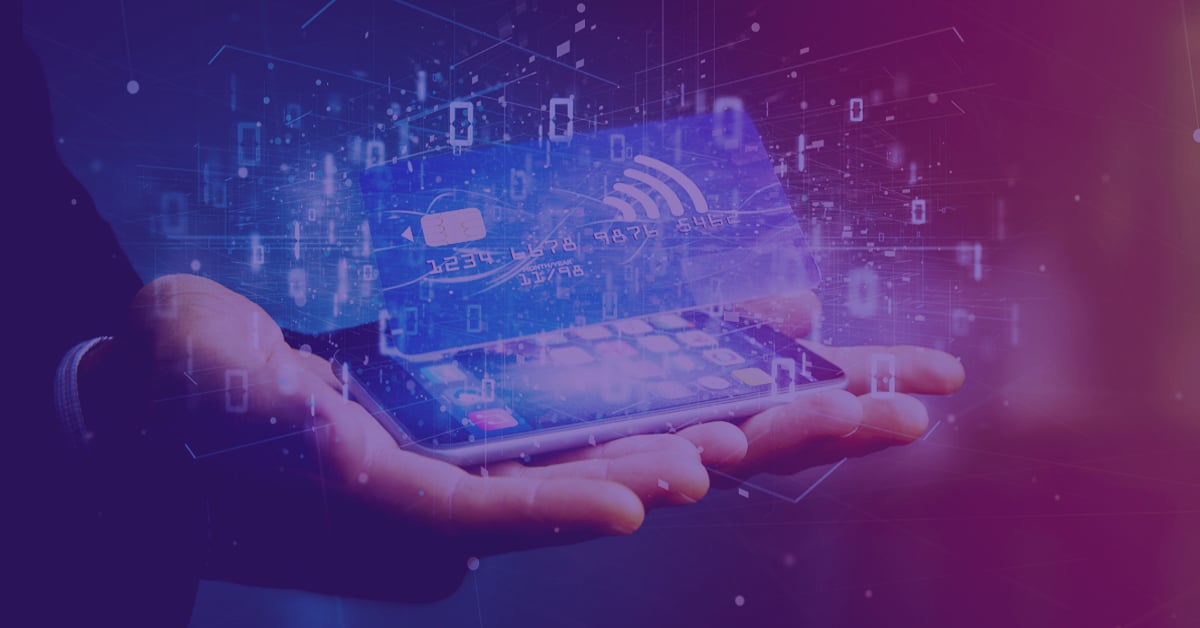Banking is undergoing a digital transformation. The financial sector is characterized by high volumes of transactional data which require storage and processing. As telecommunications and computing power expands, innovative use cases are found in banking. Digital banking creates new ways of shopping, managing client data, serving clients, and recording transactions.
Both retail and commercial banks are leading the adoption of digitalization. Digital banking use cases broadly center around enhancing the client experience or improving transactional security. In the first scenario, internet-connected devices enable faster, more convenient, and customized banking options for clients. Next, when it comes to protecting client transactions, artificial intelligence processes data locally so that fraudulent transactions are separated from legitimate transactions in real-time. Finally, blockchain technology securely records investment and trade transactions.
Through four use cases, this blog examines how digitalization is disrupting the banking landscape.
Digital Banking Helps Customers Spend
Digital banking presents a variety of payment options. It also produces banking experiences that tailor to customers’ needs. The wider connectivity and quicker data processing as a result of digitalization allow consumers to more conveniently spend and track spending.
#1: Mobile and IoT Digital Payments
Beyond teller banking and online banking, mobile banking has enabled clients to access account information in remote locations. Mobile banking requires cellular mobile and internet connections instead of cash and cards.
With mobile connectivity, clients can shop in addition to accessing their bank accounts online. Mobile payments allow customers to pay with the tap of a smartphone or smart device at the checkout counters of participating retailers. As debit and credit card use is outstripping cash, the mobile wallet is going one step further. Mobile wallet transactions are replacing debit and credit cards in some countries. In addition to smartphones, wearables such as Apple Watch and FitBit support mobile wallet apps like Apple Pay and FitPay. Increasing mobile connectivity may render trips to the bank or ATM obsolete.
#2: Budgets Based on Machine Learning
Digital banking offers not only more options for customers to pay, it also produces customized banking experiences. Machine learning processes data collected by smart utility devices to help consumers budget their utility consumption. Machine learning can likewise use shopping data to generate recommendations for consumers to manage their money better.
Smart Utilities
Banks can partner with smart home device manufacturers to share data. When consumers use electricity and water at home, IoT device meters can upload consumption data to the internet, where the data is then shared with consumers’ banks to use in preparing budgets. If there were irregular spikes in utility use, for example, if an air conditioner or sink faucet were left to run, connected devices alert consumers before the meter overcharges. Banks can track consumption data to help customers budget for recurring expenses.
Point of Sales
In a similar vein, edge-based point of sale systems have the feature to report to banks should they detect impulse purchases. Banks who receive notifications about clients’ impulse purchases can then push text message to remind clients to watch their spending. Machine learning reveals customer spending patterns and lifestyle choices from credit and debit card data, which when analyzed, can allow banks to offer tailored banking products across a client’s lifetime. Edge technologies have transformed the retail industry.
Digital Banking Simplifies Transactions
The same edge-generated data that alerts customers of their spending decisions can warn banks of fraudulent transactions. In the past, cloud computing architecture limited the speed in which transactional data could travel from ATMs, retail POS, or bank branches to a central data center. Decentralized computing brings data processing closer to the client. Banks are able to monitor suspicious activity and react with blocking withdrawals more quickly.
The intelligent edge analyzes transactions for data points such as the time and location in which they took place, their amount, and the identity of the merchant. Not only do digital banking technologies such as artificial intelligence prevent fraud, they also decrease the likelihood of misidentifying legitimate transactions. Reducing false positives lessens client frustration when accounts are mistakingly frozen.
#3: Fraud Detection
Predictive Banking
For an example of the intelligent edge’s ability to detect fraud, clients of certain banks no longer need to notify their banks of upcoming travel plans. Traditionally, clients notified banks in advance of international travel so that their bank cards would not be declined when used out-of-country. Now comes predictive banking. Predictive banking tracks what clients bought in the past and for how much in order to predict clients’ likely future behavior. For example, if an American client pays for lunch in Montreal with a debit card after having reserved a hotel in Montreal from that same account, then their transaction is most likely authentic.
Anti-Money Laundering
Closely related to fraud detection is anti-money laundering (AML). Money laundering happens when income and assets earned through illegal means are “washed” through channels to appear legal. The origins of black market proceeds are obscured through money laundering schemes such as deposits made to shell companies and offshore accounts. In today’s borderless economies, money laundering has implications for transnational crime and terrorist financing. The proliferation of cryptocurrency and electronic payments only make money laundering more accessible.
Money laundering requires sophisticated means of detection. With machine learning, algorithms are receptive to discrepancies in accounts which could indicate money laundering activity. Automated anti-money laundering increases a bank’s capacity to audit transactions and perform due diligence.
#4: Blockchain
Digitalization transforms trade and investing in addition to consumer banking. When it comes to blockchain, the idea of immutable accounting is revolutionizing commercial banking and international trade. From issuing and recording bond trades to dispatching letters of credit for soybean shipments, blockchain simplifies recordkeeping by reducing the amount of paperwork required in approving transactions. Decentralized computing inputs and tracks data at the source of transactions.
The Future of Digital Banking
Digitalization through edge computing is revolutionizing banking business models. Computing at the edge of networks involves technologies such as IoT, smart devices, machine learning, and blockchain to prepare analytics in nearer proximity to users. These are four takeaways for how edge computing is innovating banking:
- Bank account-linked mobile and Internet of Things applications provide customers with more convenient payment options than cash and debit/credit cards.
- Smart utilities and intelligent point of sales systems track customer spending and can assist customers with setting budgets.
- Predictive banking and anti-money laundering verify customer transactions and ensure banks comply with legislation.
- Blockchain records transactions for faster approval and denominates securities for trading.
While this article has focused on developed markets, digital banking also disrupts emerging markets. Greater mobile and internet connectivity on-boards previously underbanked regions, thus bringing last-mile customers into the market. Banks everywhere can implement edge technologies to generate revenue, retain customers, assess risks, and reduce costs.
If you are looking for a platform on which to develop edge-native applications or build distributed databases for cyptocurrency transactions, consider Ormuco. Ormuco provides a secure and turnkey edge computing solution. Review our features here or request a demo.





